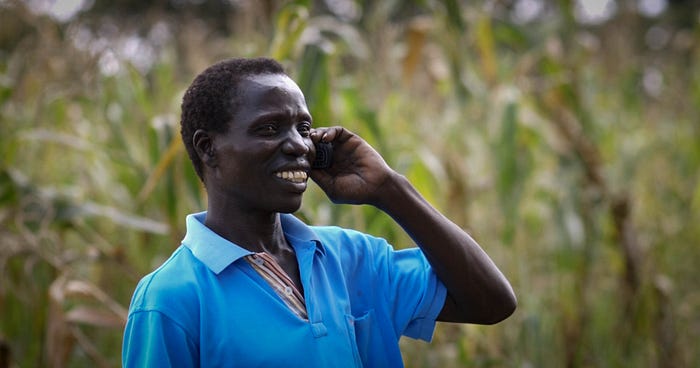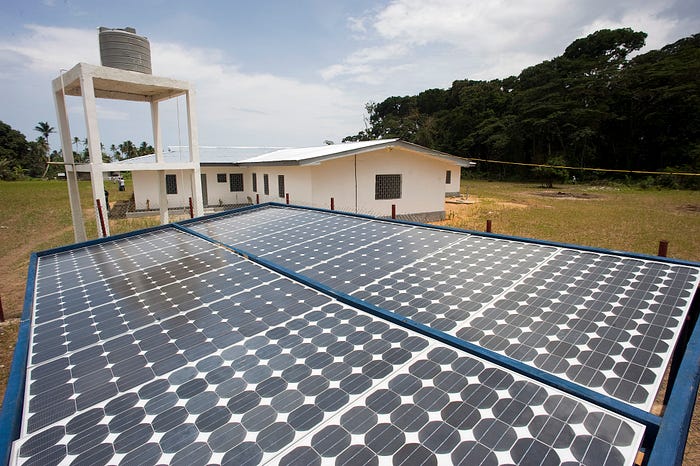COVID-19 and the nature-health-nexus

The global health crisis of COVID-19 has brought the world to a halt. These unprecedented times have devastated economies and caused socio-economic damages on top of an ongoing environmental and climate crisis.
What will this mean for the developing world and some of the world’s Least Developed Countries (LDCs)? People in developing countries are projected to lose at least US$ 220 billion in income due to COVID-19 in 2020 — a year when all countries were due to submit enhanced and ambitious Nationally Determined Contributions (NDCs) in line with the Paris Agreement on climate change.
To understand how COVID-19 is impacting LDC’s efforts to strengthen their climate plans — specifically their Nationally Determined Contributions (NDCs) and National Adaptation Plans (NAPs) — the joint UNDP-UN Environment programme interviewed Mr. Sonam P. Wangdi, Chair of the Least Developed Countries Group under UNFCCC.

Mr. Sonam P. Wangdi is the Secretary of the National Environment Commission of the Kingdom of Bhutan and responsible for overall regulation of the country’s environment sector. He has his finger on the pulse on the latest development advances in the world’s least developed countries, and was selected as one of the 100 most influential people in climate policy by apolitical.

How significantly has COVID-19 affected plans to enhance national climate commitments?
With the postponement of COP26 — the UN’s annual climate conference — to 2021, it’s unlikely negotiators will meet in person this year, but the commitments of countries to submit more ambitious Nationally Determined Contributions by the end of 2020 still needs to be fulfilled. Despite the disruption of COVID-19, we need to keep the momentum going on the climate discussions. Outside of the negotiation process, the LDC Group has embarked on a number of key initiatives, which require constant communication and consultations with our partners.
Therefore, we will use the available time to better prepare ourselves to respond to the impacts of climate change. In reality, existing emissions reduction commitments in the NDCs are far away from meeting the Paris Agreement’s goal of limiting the global average temperature rise to 1.5°C by the end of this century. Developed country Parties must also deliver on their commitment to collectively mobilize US$ 100 billion per year by 2020 to address the needs of developing countries in tackling climate change.

With the onset of COVID-19, what are the main issues that the world must address in your view?
As the world responds to one crisis, we cannot let another crisis worsen. The health of our communities and healthcare workers should be the highest priority, but climate change will continue to threaten the lives and livelihoods of our people after the pandemic has ended. Even during the pandemic, climate change continues to threaten the health and safety of our people in the LDCs.
Hurricane Harold, a category 5 cyclone, unleashed its fury this month, affecting our people in the Pacific. Unlike COVID-19, we understand the risks of climate change very well — the science is robust and clear. Not acting on science that will guide us towards the goals of the Paris Agreement, is not an option.

How will the socio-economic impacts of COVID-19 affect the LDCs climate plans enhancement process?
The impacts of COVID-19 have been devastating. Many countries are locked down, lives have been lost, the global economy and international trade has been severely impacted, and international mobility has been halted in almost all parts of the world. These measures to fight COVID-19 have adversely affected progress for preparation of Nationally Determined Contributions and other Long-term Strategies (LTS)_in most countries, as the process requires intense stakeholder consultations and vetting. However, regardless of the difficulties that countries are facing now, many LDCs are continuing their NDC preparation work.

How can LDCs keep up the momentum on climate planning domestically, and what are the challenges they face?
At the domestic level, LDCs are continuing to prepare their National Adaptation Plans and NDCs, albeit at much slower rate. In Bhutan, we are working with the support of UNDP to advance the Bhutan NAP process — with a focus on water as a crosscutting issue between adaptation and the NDCs — by carrying out assessments and analysis that don’t require face-to-face mass consultation with the sectors. We are also engaging virtually with our experts, consultants and key stakeholders.

However, this new way of working virtually, presents us with both challenges and opportunities. While virtual meetings ensure affordable and inclusive engagement, good connectivity infrastructure such as reliable internet is still a huge challenge in the LDCs. In general, we continue to face capacity constraints at all levels to access finance from climate funds and other financial institutions. This crisis has also demonstrated the urgent need for in-country national experts.
“As the world responds to one crisis, we cannot let another crisis worsen.”

How can international agencies help LDCs align their progress on climate action with tackling the health emergency?
Many of our countries rely heavily on foreign aid, poverty still looms large, and underdevelopment persists. Regardless of the situation, our countries are also investing in low carbon and climate resilient development. In this context, international agencies and donors should simplify and streamline the application, review and approval of funding, and expedite its disbursement.
In addition, approved projects need to be flexible to respond to such a crisis, such as allowing funds to be diverted for the adoption and use of virtual engagement technologies or other necessities to ensure minimum disruption.

Recovering from COVID-19 provides an opportunity to build back better. What are the main areas of investments that could benefit LDCs the most?
As the governments respond and make plans for recovery, it’s a prime opportunity for ambitious climate change action to guide those recovery processes in order to see a zero carbon, sustainable and just transition to a safer future for all. To make societies and economies more resilient, LDCs could benefit from investing in improved conditions for workers and get industries on the path to de-carbonization, clean energy, green jobs and sustainable climate-resilient investments.

For example, climate action comes together with many co-benefits, such as reducing fossil fuel dependency helps reduce trade deficit and contribute the reduction of local air pollution. Therefore, the main areas of investment must address low carbon and climate resilient development that will in turn, contribute to the sustainable development of the country.

The joint UNDP-UN Environment NAP-Global Support Programme — funded by the Global Environment Facility — has assisted 59 least developed and developing countries to identify technical, institutional and financial needs to integrate climate change adaptation into medium and long-term national planning and financing. Since 2013, the programme has supported the formulation and implementation of National Adaptation Plans (NAPs) under the UN Framework Convention on Climate Change.
Story by Melanie Pisano, Climate Change Communications Specialist/UNDP with support from Louis Nunes Da Costa, Communications Specialist/UNDP HQ.
